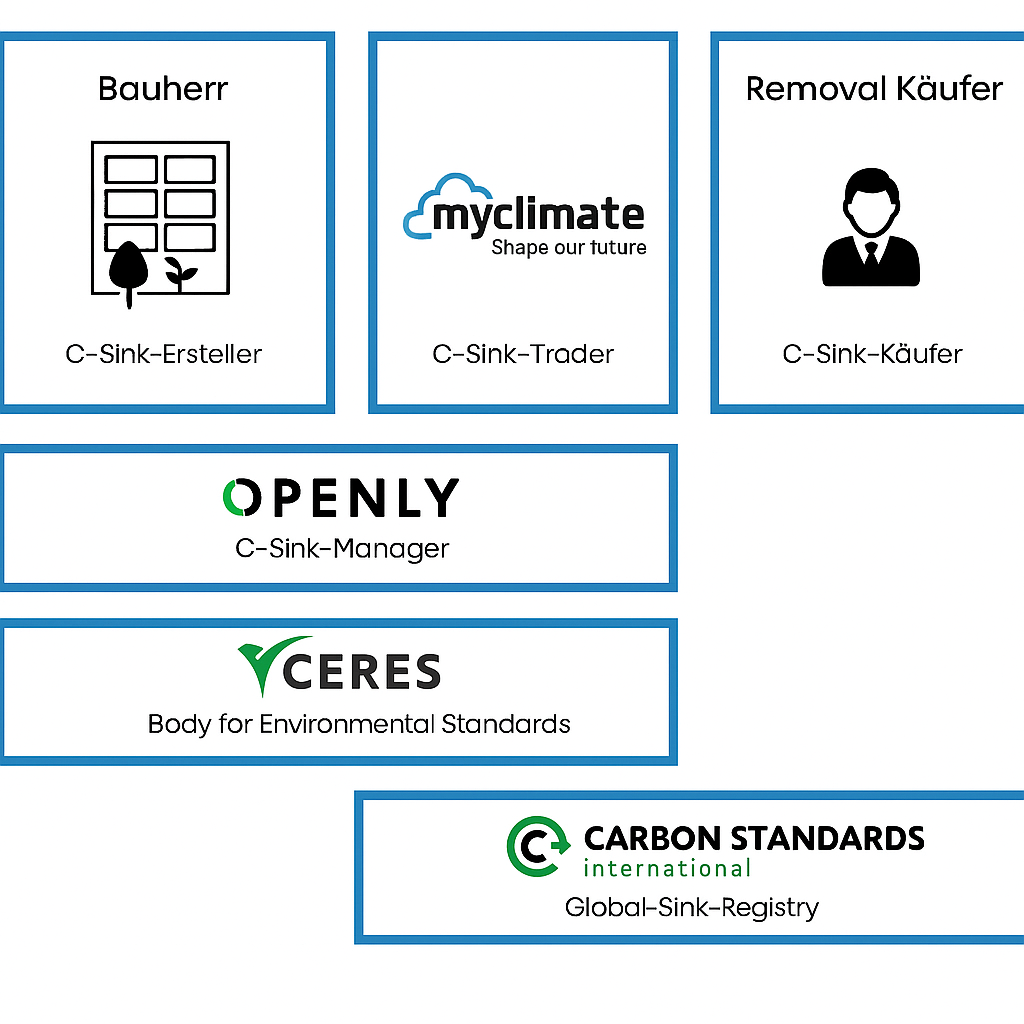CO2 certificates support biogenic construction projects
OPENLY acts as C-Sink Manager for the registration of CO2 sinks in biogenic construction projects. We certify according to the Global Construction C-Sink Standard, which is based on the EU Carbon Removal Certification Framework, and provide comprehensive support to clients and project developers. The standard meets the highest quality requirements, which are confirmed by the ICROA label. You benefit from a high-quality and tradable certificate for new buildings and renovations that efficiently combines climate protection with economic value creation.
OPENLY services:
Certification of installed C sinks in the building with completion date from 1.1.2024
Preparation of CO2 balances according to SIA2032 / SIA390 / DGNB
Component proposals for radically CO2-reduced and CO2-storing components
Minergie P and SNBS support for major projects
Dr. Christoph Neururer
DGNB / ÖGNI / SGNI Auditor
LEED accredited professional
EU taxonomy approved advisor
+41 78 258 52 37
Christoph.Neururer@openly.systems
Refinance up to 1% of construction costs
Offsetting (you sell the certificates): The net remuneration, including certification costs, is 85 Euro/t or 80 CHF/t
insetting (you keep the certificates yourself): The certification costs amount to 20 Euro/CHF per ton
(volume discount from 1000 t / construction project).
As a C-sink manager, Openly issues CO2 certificates, enabling biogenic construction projects despite higher costs compared to conventional construction.
The remuneration comes from myclimate.org as
re-seller of these certificates and is paid out by OPENLY AG after completion of construction.
The
standard:
Principle: The building is the C-sink
Creator of the standard: Ithaka Institute
C-Sink Manager: OPENLY AG
Audit: CERES
Public C-Registry: Carbon Standard International
Content:
Standard is based on the principle of additionality and focuses on structurally installed, biogenic building materials with a useful life of over 60 years (EU CRCF target: 35 years), such as structural timber, biochar concrete, hemp, cellulose, cork, straw, bamboo, grass and reeds.
Inventory control is carried out annually by the C-Sink Manager.
There is no baseline scenario; the calculation is net, i.e. taking into account and deducting emissions from farming (cultivation), processing, transportation and installation.
Certification by OPENLY takes place on the property (the building is the c-sink) in favor of the property owner.
Use case:
Credit: Construction Stored Carbon
The OPENLY VALLEY WIDNAU pilot project with 19 apartments has saved around 900 tons of CO2 (avoided emissions, not certifiable) and stored an additional 554 tons of CO2 (stored carbon)
119t made of hempcrete from Cancret.com (exterior insulation and non-load-bearing interior walls)
374t construction timber (446m3)
9t cork
52t from biochar in concrete
The C-sink of Valley Widnau is therefore approx. 375 kg per m2 net floor area or approx. 250 kg per m2 gross floor area above ground.
What is
CDR?
Plants as CO2 vacuum cleaners using the example of hempcrete:
1kg of hemp binds around 1.7kg of CO2 during growth (3 months). Photosynthesis removes CO2 from the atmosphere and stores it temporarily during the life of the building.
(Carbon Dioxide Removal)
CO2 balances are based on Ökobaudat or KBOB (Switzerland).
We have prepared these for you in an understandable way:
Hempcrete: Net negative emissions approx. -100kg/m3
Please note:
A) The primary goal must be to avoid CO2 emissions.
OPENLY engineered buildings achieve 6kg CO2 per m2 of energy reference area, which means a reduction of > -50% and corresponds to the legal requirements of Denmark 2029.
B) If certificates from C sinks are used for insetting or sold to mylcimate.org(yellow dashed line in the graphic), these can no longer be included in the CO2 balance of the building construction. Such a building may then no longer be designated "net zero".
C) If you are building without OPENLY advice, make sure that your building material suppliers have not already sold the C sinks contained in the building materials themselves (see e.g. Neustark). Basically, the sink belongs to the builders who paid for the building material (the building is the C-sink).
The certification process
The potential of buildings as C sinks
The annual C-sink potential is around 5 gigatons of CO2, which corresponds to an estimated market value of USD 1 trillion. With the CRCF, the EU has created a legal framework for temporary sinks.
Our roadmap envisages carrying out pilot certifications of 10,000 tons in 2025/26.







